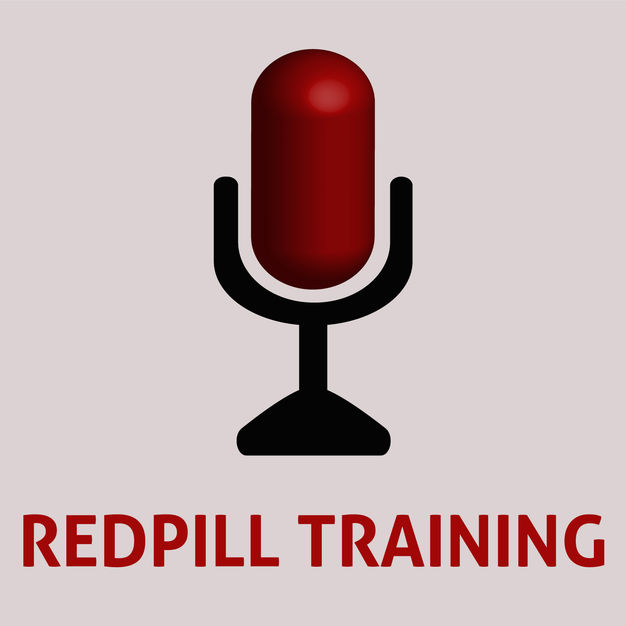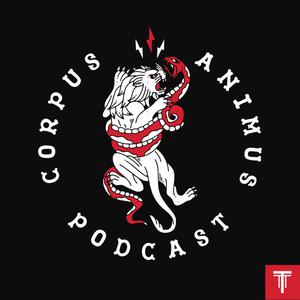
RedPill Training Podcast
RedPill Training
Sport, training and coffee lover, sharing experiences and science from the sports and training world.
- Special Edition: The DoctorsNew special edition podcast now available featuring athlete Carys Webster and RedPill coach Kerry Lyske. Carys works in intensive care and compete in CrossFit sanctional level. Kerry is a rheumatologist who mostly works with muscular skeletal pain.25 October 2020, 2:38 pm
- All about runningEverything you need to know about running from injuries, building volume, to the mechanics of running.9 September 2020, 6:54 am
- Strength and powerThe coaches delve into how to decipher which strength protocols to select for different athletes and how to get the best out of them.24 August 2020, 7:24 am
- Special Edition: The Changes in CrossFitIt’s been a turbulent couple of months within the sport of CrossFit. Phil, Jowsey and Jemma discuss what’s been going on and what the future of the sport might look like.22 August 2020, 3:23 pm
- 1 hour 4 minutesReturning to sport from injuryHow do you know when your athlete is ready to go back to sport? What are the criteria and the thought processes behind us as coaches and how we allow athletes to return to sport? When do you allow them to go back to training and what is involved in that decision process?29 July 2020, 7:05 am
- Flexiblilty vs stabilityIn this episode, Phil, James, and Jemma discuss flexibility, stability, and how the two exist within motion. They chat about why flexibility and stability are difficult topics to research in tandem, how to assess them in isolation with athletes, strategies about identifying how they exist within motion, how to separate them out to see them within motion, and what strategies to use to help people with deficits in either area.29 July 2020, 6:58 am
- Special Edition: All About RedPill GenericEverything about how RedPill Generic — how it came about, the work behind the scenes, what to expect, and the thinking behind the workouts.24 June 2020, 1:50 pm
- 59 minutes 55 secondsCulture in sport
Culture in Sport
Different sports display different cultural characteristics.
Phil Mansfield and James Jowsey explore their experience of different sports to highlight the varying cultures in each one. From sportswear to admitting injury, every sport is different. Is there an opportunity to learn from one another?
Intro…
One of the things that fascinates me the most.
One sport proves you can do it, one sport says you can’t.
Everyone thinks they look good in their sports kit.
18:00
Culture of training
25:00
Benefits of multi sports training camps
26:00
CrossFit Athletes competing at the Weightlifting Commonwealth Games
34:00
Ability to lose
35:00
Cultural Injury in sport
Pain threshold – can it be trained through the culture of sport?
51:00
Display of pain in different sports
53:00
What is the worlds toughest / hardest sport?
58:41
What is the best dressed sport?
18 April 2019, 4:47 pm - 45 minutes 4 secondsWhich weighs more? 200 kilo back squat or 400 kilo leg press?
Phil Mansfield and James Jowsey discuss strength training. This is for coaches and athletes struggling to increase their numbers even though they are putting in the work and time during strength training.
If you’re not getting the return on investment for time invested, then we need to look at why.
Intro
There’s not necessarily much difference in strength cycles – just the way they are sold. People would like you to believe the way they write 4x8 is different to mine but it’s not.
Most strength cycles have similar aspects. The critical features are the same. The neurological stimulus they are going after are very similar.
7:55
The biggest issue with strength training is how we measure it. How many kilos of weight does athlete move from point a from point b not how much force, there is an incredible difference between the two.You are actually moving more weight during a 200-kilo squat than you are a 400-kilo leg press because of where they weight is in relation to the centre of mass.
29:00
Coaches are scared to make a decision. They want to be told what to do. What do I do in this situation?The manager of the football team ultimately has to decide what tactics. He has to understand the players etc to make that decision.
In the CrossFit world we have to understand the athlete to allow us to make the right decision. Understand their body, energy systems, joints etc..
34:00
How do you know? Do you need a strength cycle or help with positioning?11 April 2019, 2:41 pm - 41 minutes 43 secondsTalk the torque
Talk the Torque
I would like to help people get through the apparent misunderstandings of torque and understand it from a scientific point of view.
Why is it important to understand, what is its role for us as coaches? How is it researched?
2.15
It’s just energy.
If you fire water through a tube it creates energy and creates pressure against the outside of the tube.
3.05
The scientific definition
‘A torque acting on a body is created by a force acting a distance away from the axis of rotation.’
Axis of rotation in a gym setting… a bicep curl is the elbow.
The forces are the key component within the torque concept. Without the forces there can’t be a torque.
None Contact Forces
Gravity
Contact Forces
Ground reaction force
Joint reaction forcesFriction
Fluid resistance
Air resistance
Inertial force
Muscle force
Elastic force
7.50
It’s a big topic there are some many different avenues. We could talk about the biomechanical route, muscular route, length / tension … this might be two podcasts.
9.20 Digital Human Modelling Paper.
13.30
EMG vs Torque are 2 completely different topics
16.00
Muscles force – Achilles tendon
20.30
We can see from the biomechanical studies these forces iniitate motion…
Torque is the final energy.
29.00
It touches on strength vs technique
The application of squat training, the reason people do a box squat trying to keep a vertical shin… when we look at the bone motions the centre of mass has changed. The vertical shin is creating a greater torque than allowing the knee to drift forward. The reason people get stronger by doing box squats is because you have changed the torque on your body, you are overcoming more weight even though there is less weight on the bar…
4 April 2019, 2:22 pm - 37 minutes 55 secondsHow do you understand your athlete? How much is too much?
2:30
How do you get to understand your athlete? How much is too much? how much is not enough? Both In terms of weekly volume, level of fatigue, optimal performance for the athlete.
2:40
Acute / Chronic balance
What they’re doing today against what they have been doing over a period of time.
3:43
Start by defining Acute / Chronic
4:43
I use a 42-day past and 7 days present…
5:30
Knowing what the year looks like and the phase focus allows us to see where the stresses are coming.
6:30
Measurement Tools:
• Heart rate
• Wattage
• Calories burnt (poor indicator but is used)
• Work effort / how much load you’re putting through the system in the day
• Acceleration
• Deceleration
• Change of direction
• Blood values
That data set is ultimately how hard I’ve worked in that day.
Essentially you’re a detective. I even use body language and tonality / how the athlete communicates with you…
11:13
That is the game, everything stems from this question.
The most important thing we do is balance acute / chronic
12:32
Unlike the science of gravity when you drop something out of our hand and 100% of the time it will hit the floor, when it comes to a training response, the bodies adaptation to sport and demand… in all the studies that we read across the different parameters from injuries to performance we don’t see 100 out of 100, we don’t see 100%.
14:51
Sleep is another parameter … and an important one.
17:05
The question is how do you get the balance right?
Communication with the athlete is crucial. Performance can be sub optimal because of fatigue.
Missed timed or purely communicated and the athlete will panic when they are not hitting their numbers.
20:34
How do we manage, how do you know when is too much?
27:00
The goal is to be practicing your sport as much as possible. When monitoring your athlete, you’ll quite often give them more work? What makes you go that way?
I use acute / chronic for performance not injury prevention.
The simplicity of this is it’s just listening to the athlete and getting as much information from them as you can get. I expect messages from my athlete 5/6 times a day giving me feedback, if we’re not in camp.
30:38
We’re not dealing with machines, computers. We, as humans, are variable.
The science of training vs the human
The athletes don’t need to understand, they just need to provide the data (e.g. heart rate, squat numbers etc) It’s your job as a coach to interpret the data.
28 March 2019, 4:08 pm - More Episodes? Get the App
Your feedback is valuable to us. Should you encounter any bugs, glitches, lack of functionality or other problems, please email us on [email protected] or join Moon.FM Telegram Group where you can talk directly to the dev team who are happy to answer any queries.
 Corpus Animus Podcast
Corpus Animus Podcast
 Strength Ratio
Strength Ratio
 OPEX Fitness Presents: Back Room Talk
OPEX Fitness Presents: Back Room Talk
 Legion Strength & Conditioning Podcast
Legion Strength & Conditioning Podcast